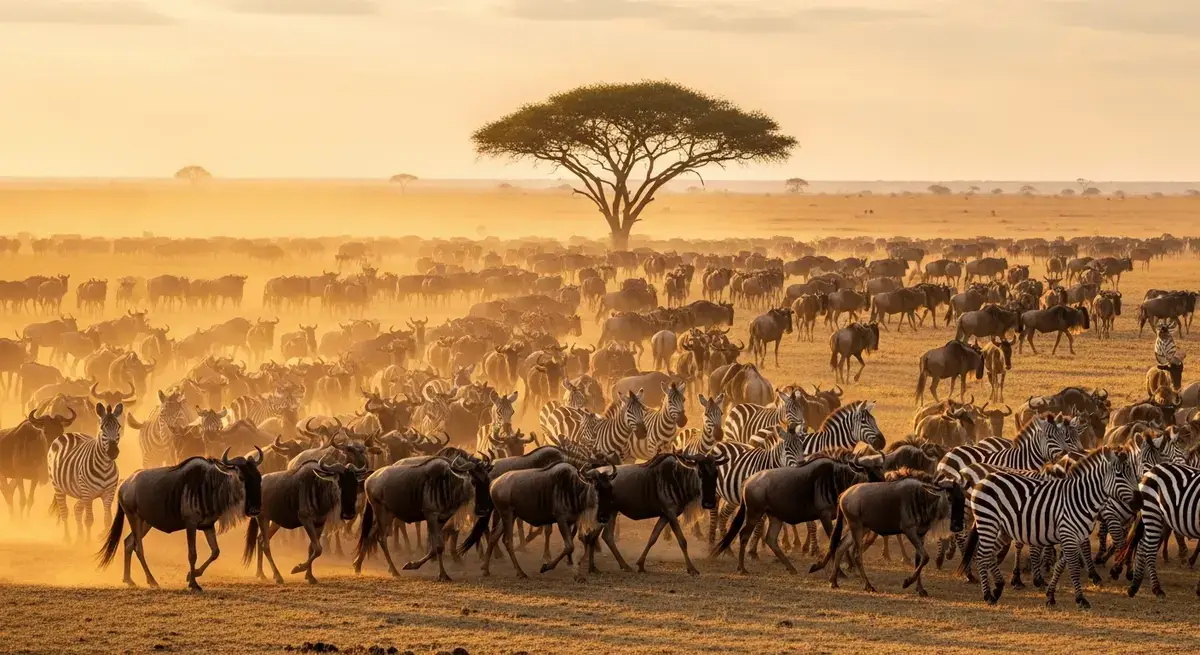Awe-Inspiring Animal Migrations That Shape Our World
Animal migration stands as one of nature's most breathtaking marvels, revealing the incredible resilience and adaptability of countless species. This extraordinary behavior goes beyond mere survival—it is a cornerstone in maintaining the delicate balance of ecosystems worldwide. From soaring birds and roaming mammals to swimming fish, the astonishing distances these creatures travel showcase the diverse strategies they use to thrive in ever-changing environments.
What Drives the Epic Journeys of Migrating Animals?
Animal migration involves the seasonal movement of creatures between regions, primarily motivated by the search for food, breeding grounds, or more favorable climates. These migrations take many forms, including seasonal journeys timed with the calendar, daily circadian movements, and partial migrations where only some individuals relocate.
Several factors influence these migrations:
- Weather and climate shifts
- Food supply availability
- Breeding opportunities
- Innate instincts and learned behaviors
Together, these elements guide animals through often perilous journeys, ensuring their survival and reproductive success.
Birds That Defy Limits: Masters of Migration
The Arctic Tern: The Ultimate Long-Distance Traveler
Covering an astounding 40,000 km (25,000 miles) annually, the Arctic tern holds the record for the longest migration of any bird. Flying from its Arctic breeding grounds all the way to the Antarctic, it experiences two summers each year—a truly unparalleled feat. With a lightweight frame and wide wingspan, these birds are perfectly built for endurance flight.
Monarch Butterflies: A Multi-Generational Odyssey
Monarch butterflies embark on a stunning migration spanning 4,800 km (3,000 miles) from Canada to Mexico. What makes their journey remarkable is that it unfolds over multiple generations, with each one continuing the trek and ultimately returning to the same wintering sites in the Sierra Madre mountains.
Other Noteworthy Avian Travelers
- Adélie penguins travel roughly 10,936 miles during their seasonal movements.
- Caribou in North America migrate over 838 miles, highlighting the diversity in bird and mammal migration distances.
Mammal Migrations: Epic Treks Across Land and Sea
The Great Migration: Nature’s Grand Spectacle
Each year, over 1.5 million wildebeests and zebras journey across the Serengeti plains in search of water and fresh grazing grounds. This awe-inspiring migration not only ensures the survival of these species but also sustains the ecosystem’s overall health and diversity.
Sea Turtles: Navigators of the Oceans
Leatherback turtles travel more than 10,000 miles, while loggerhead sea turtles can cover journeys up to 22,000 miles in their lifetimes. These oceanic voyages are crucial for feeding and nesting, underpinning the survival of these ancient mariners.
Other Mammal Migratory Wonders
- Elephant seals migrate an impressive 13,000 miles annually.
- Lesser flamingos display unique breeding migrations near Lake Natron, adding to the rich tapestry of mammalian travel.
Fish on the Move: Remarkable Aquatic Migrations
Salmon: The Epic Return Home
Pacific salmon are famous for their life cycle migration, swimming back to the very streams where they were born to spawn. These fish battle upstream currents for up to 400 km (250 miles), completing a life journey that nourishes not only their species but the entire ecosystem through nutrient recycling.
Great White Sharks: Ocean Wanderers
Great white sharks traverse vast distances across the Indian Ocean and beyond. As apex predators, their migrations illustrate the complex balance of marine ecosystems and the critical role they play within it.
Why Animal Migration Matters: Ecosystems and Conservation
Vital Roles in Ecosystem Health
Migratory species are essential players in ecological processes. By moving between habitats, they facilitate nutrient cycling, influence population dynamics, and help maintain biodiversity across vast landscapes and seascapes.
Facing Modern Challenges
Despite their importance, many migratory animals confront threats such as habitat destruction, climate change, and human interference. Protecting migratory routes and habitats is paramount to preserving these incredible journeys for future generations.
Supporting conservation initiatives ensures that these natural wonders continue to inspire and sustain the planet’s ecological balance.
By appreciating the incredible journeys of migratory animals, we deepen our understanding of nature’s interconnectedness and the urgent need to protect these vital species and their habitats.


